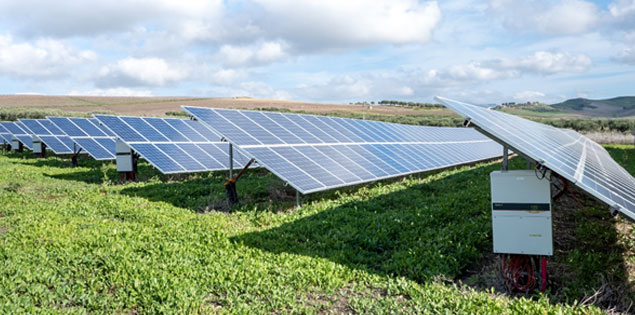The Sahel region of Africa sits at a nexus of insecurity, poverty, and climate change. The primary work sector in the Sahel is agriculture, with it being responsible for more than 60% of livelihoods across the region. However, increased cycles of irregular rain fall and extreme weather events, combined with an increasing population, have led to limited resources and increased violence. This pattern has forced people away from farmlands and into cities where energy demands are high, but energy generation is poor. The level of power generation capacity in the Sahelian countries is 35 W per capita, which is only a third of the Sub-Saharan Africa average and 4% of the global average. This problem is compounded by the fact that increased urbanisation has spawned new businesses across Sahelian emerging markets, which further exacerbate the energy demand. By 2030, the Sahelian population will grow to 140 million, 40% of which will be in urban areas. The economy is projected to be 90% larger than today. However, under current policies and development patterns, this leaves 80 million people without access to electricity and 120 million without clean cooking. Sahelian governments need short- and long-term solutions that will mitigate the current effects of climate change, which will maintain job security for farmers, and reduce Malthusian based conflict. In this case transition finance that can fund renewable technology solutions is well placed to address the impending energy crisis by accelerating clean energy initiatives that can facilitate continued business growth.
The Desert to Power G5 Sahel Facility represents a key step forward for blended finance in the region. It aims to harness solar energy across the Sahelian desert with the mass construction of solar panels to create a low emission power generation pathways. This facility received funding in February of 2022 from the African Development Bank who commissioned US $379 million and the Green Climate Fund (GCF) has provided an additional US $150 million When fully operational, it will provide an additional 10 GW of additional capacity to provide clean electricity for an estimated 250 million people. The Desert to Power Initiative (DTPI) may seem too vast a project to break down the intricacies of Sahelian climate finance needs. Fortunately, it comes with a defined implementation structure that adapts to the country’s energy and business needs. The African Development Bank has a subset of business and agricultural projects that the DTPI seeks to aid. For example, the solar power created by the DTPI will accelerate the adaptation and implementation of solar powered irrigation pumps in Sudan. The presence of this facility will limit risk associated with private investment into solar power or other renewable energy sources in the region. To this end, the GCF has specified that it would like part of its funding to go to Independent Power Producers (IPP’s) to ensure that private sector funding is catalysed. This will result in reduced emissions and will increase farmer income, yields, and livelihoods with the broader goal of reducing urbanisation and decreasing insecurity associated with agricultural work.
The DTPI is a useful first step being taken to finance cleaner energy across the Sahel and can mobilise local governments and businesses to identify other areas of opportunity. The DTPI represents the first step in mobilising the Sahel’s abundance of natural resources for cleaner energy purposes. However, many areas of the Sahel lack the funding that could supply them with modern equipment to support such a transition. For example, the Kainji Dam in Nigeria underperforms by close to 500 MW due to antiquated technologies that support it. If the DTPI is successful in bringing mass change to the energy infrastructure of the Sahel, then investors and governments may see the benefits of transition finance in relation to specific emerging markets across the Sahel.
Effective transition finance stands to have a double effect across the Sahel. It could first modernise the rural economy, which is still of most importance in the region, by supplying farmers with newer and more effective renewable technologies. It could also nurture growing markets and businesses in urban areas while reducing their current reliance on traditional energy sources. If successful, the DTPI could mark a turning point for climate finance usage in the Sahel and be a blueprint for more climate finance projects in the region.
Bibliography:
https://www.unhcr.org/61a49df44.pdf.
https://www.iea.org/reports/clean-energy-transitions-in-the-sahel/executive-summary
https://www.greenclimate.fund/project/fp178
https://www.afdb.org/sites/default/files/news_documents/dtp-brochure-2021.pdf.
https://guardian.ng/opinion/decarbonising-sub-saharan-africas-energy-systems/
https://www.greenclimate.fund/sites/default/files/document/25180-afdb-desert-power.pdf

